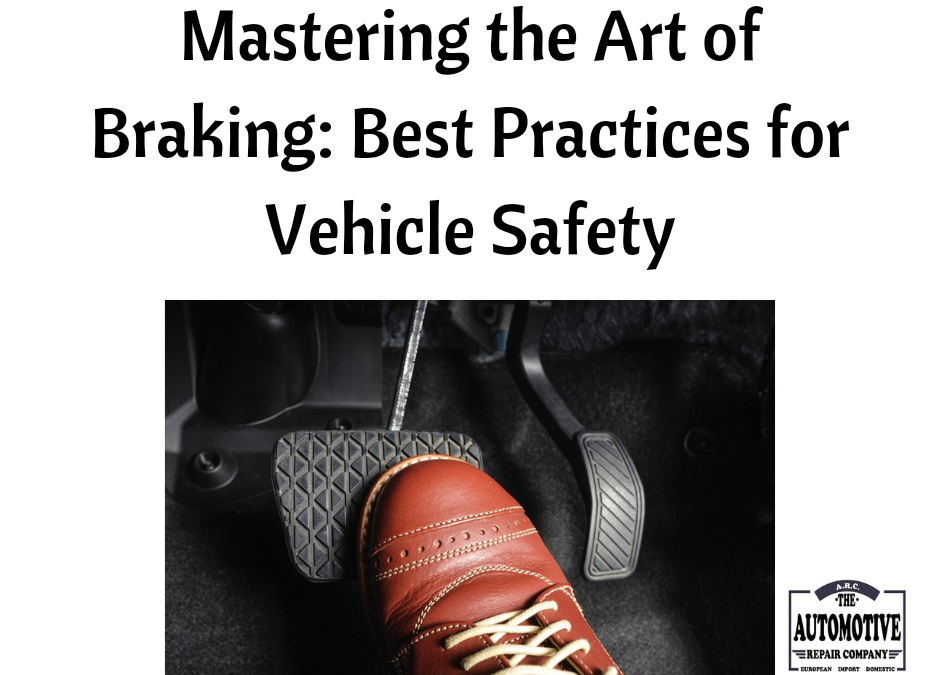In the realm of automotive safety, few components are as crucial as the brakes. They serve as the ultimate line of defense, allowing drivers to control their vehicles and navigate roads safely. However, proper braking technique goes beyond simply pressing the pedal. Understanding the dynamics of braking and employing best practices can make all the difference between a smooth journey and a potential disaster. In this comprehensive guide, we delve into the art of braking and outline essential best practices for every driver.
Understanding Braking Dynamics
Before diving into best practices, it’s essential to grasp the fundamental principles of braking dynamics. When you press the brake pedal, you engage a hydraulic system that applies pressure to the brake pads or shoes, creating friction against the rotors or drums. This friction slows down the vehicle by converting kinetic energy into heat.
Best Practices for Effective Braking
1. Anticipate and Plan Ahead
One of the most effective ways to enhance braking safety is by anticipating road conditions and traffic flow. Pay attention to upcoming intersections, traffic signals, and potential hazards. By planning ahead, you can gradually reduce speed and avoid sudden, panic-braking situations.
2. Maintain Proper Following Distance
Maintaining a safe following distance is paramount for reacting to sudden stops or emergencies. The general rule of thumb is to keep at least a three-second gap between your vehicle and the one in front. Increase this distance during adverse weather conditions or when driving at higher speeds.
3. Progressive Braking Technique
Rather than slamming on the brakes abruptly, practice progressive braking. Apply pressure to the pedal gradually, allowing for a smooth and controlled deceleration. This technique not only reduces wear on brake components but also enhances stability and traction.
4. Brake Modulation
Mastering brake modulation involves adjusting braking pressure based on road conditions and vehicle speed. In situations such as downhill descents or slippery surfaces, lightly pulse the brakes to prevent lock-ups or skidding. Modern vehicles equipped with anti-lock braking systems (ABS) automatically modulate brake pressure to prevent wheel lock-up.
5. Use Engine Braking
In addition to traditional braking, leverage engine braking whenever possible, especially when descending steep gradients. Downshifting to lower gears helps slow down the vehicle without relying solely on the brakes, reducing brake fade and overheating.
6. Avoid Overloading
Excessive weight puts added strain on the braking system and compromises stopping distances. Avoid overloading your vehicle beyond its recommended capacity, and distribute cargo evenly to maintain balanced braking performance.
7. Regular Maintenance
Routine maintenance is key to ensuring optimal brake performance. Regularly inspect brake pads, rotors, calipers, and brake fluid levels. Replace worn components promptly to prevent brake failure and maintain safety on the road.
8. Brake in Straight Lines
When coming to a stop, brake in a straight line whenever possible. Turning while braking increases the risk of losing traction and control, particularly on slippery surfaces. Once the vehicle has slowed down, you can safely initiate the turn.
9. Be Mindful of ABS
If your vehicle is equipped with ABS, understand how it functions and be mindful of its activation. ABS systems pulsate the brakes rapidly during hard stops, allowing for steering control while braking. Maintain firm, steady pressure on the brake pedal and avoid pumping the brakes.
10. Practice Emergency Braking
Finally, familiarize yourself with emergency braking techniques in case of unforeseen circumstances. If a sudden obstacle appears in your path, firmly apply the brakes while maintaining control of the steering wheel. Aim to bring the vehicle to a complete stop while minimizing the risk of collision.
Mastering the art of braking is an essential skill for every driver. By incorporating these best practices into your driving routine, you can enhance safety, prolong the lifespan of brake components, and mitigate the risk of accidents. Remember, safe braking is not just about stopping—it’s about arriving at your destination unscathed. So, buckle up, stay alert, and brake responsibly for a smoother, safer journey on the road.

